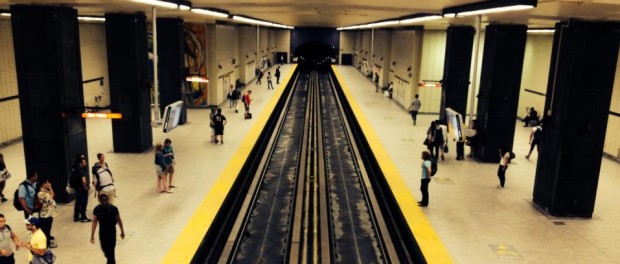The Frenglish Digest: Language Wars (Again), Horse Controversy & Archaeology Digs
Praveen Albuquerque, a Montreal resident, just starred in the latest chapter of the city’s long saga of language battles this past Wednesday. The Montreal resident showed up at Verdun Hospital to get a hospital card, a usually routine benign errand, only to be greeted by an unsympathetic clerk who demanded he speak French. Although perfectly bilingual, Albuquerque prefers to use English for medical matters, explaining that things are clearer to him that way. “[If] my language is English, that is my right”, he said, hoping that the government would guarantee health care services in English at all times for everyone. A spokesperson for the hospital declared that all patients were entitled to services in English and encourages anyone who encounters issues to file a complaint.
Distaste for Shakespeare’s tongue wasn’t the only source of tension in the city this week, however. A photo of a caleche horse who accidentally fell during a metal grate incident, taken last Tuesday, was making the rounds on social media throughout the week, attracting an aggregation of critics concerned about animal welfare. They wanted the city to follow the examples of London, Paris and Toronto: ban caleches downtown. The SPCA was particularly worried about the animals’ working conditions, citing exposure to extreme temperatures, lameness from continually standing around and city pollution as dangers to the horses’ well-being. However, Luc Desparois, owner of the Lucky Luke stables (the residence of most Montreal carriage horses) was not buying it. “The veterinarians are always checking at least once, twice, sometimes three times a week, understandably,” he said, adding that there were no real risks since the horses were accustomed to the city environment. He also stated that the incident was due to an inexperienced driver’s error. Mayor Coderre addressed the controversy by asking to see all the veterinarian reports of the city’s carriage-pulling equines. In the end, the only happy party seemed to be Marilyn, the photographed horse. She escaped the ordeal without injuries and had a few days off.
Amid all this negativity, however, history buffs had more than enough reason to rejoice to the music of not one, but two archaeological finds. The first was the buried remains of an old town. Archaeologists found traces of the charming settlement of Saint-Henri-des-Tanneries beneath the new Turcotte interchange. Dinu Bumbaru, policy director with Heritage Montreal, explained that the settlement was a direct legacy of the city’s small artisan industry from the 1780s. In fact, this particular town specialized in leather production, a popular economic activity at that time. It is too soon to know if the site or any of its artifacts will be available for public viewing.
The mosaic-tiled sign of a wartime era diner, long hidden behind a peepshow sign on a decaying building, was also uncovered. Northeastern Lunch (1001 Ste-Catherine East), was once a popular chain of eateries with locations on St-James Street (now St-Jacques Street), Queen Mary Road and on the ground floor of the Sun Life Building. Leonard Cohen found within its walls a source of inspiration for one of his earliest poems, Les Vieux, describing his twenty-year-old self’s perception of the old men sitting at the lunch counter. He spent time there as a teen.









